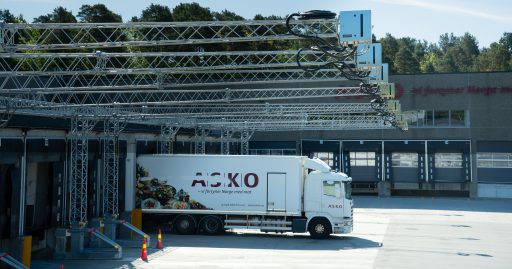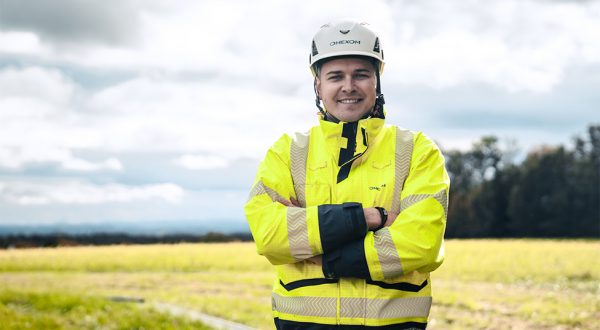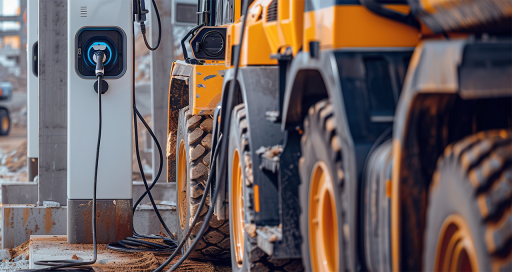The electrification of heavy transport: the new frontier in sustainable mobility
Reading time: 7 min
Road haulage has begun its electric revolution, with a major challenge to be addressed: the need to build infrastructure capable of supporting its energy requirements. The number of initiatives is growing – we find examples in the United Kingdom and Norway.

As the world steers toward a low-carbon future, the electrification of heavy transport – trucks, buses, trains and ships – has emerged as one of the biggest challenges & opportunities of the energy transition. Private electric vehicles have quickly taken hold, but the decarbonisation of freight and public transport remains a challenge.
One of the main obstacles identified is the charging infrastructure – an electric truck can take up to 728kWh with the typical battery size currently range is 250kWh to 600kWh for a full charge, compared with 50 to 100 kWh for a car. Current charging networks were not initially designed to handle such high-capacity requirements.
Integrated solutions combining renewable energies, battery storage and intelligent charging systems have therefore become essential to an electrification process to support capacity requirements and to enhance availability of the local grid networks.
United Kingdom: the Electric Freightway programme
This is precisely the large-scale transformation the United Kingdom is seeking to achieve with the £200 million Innovate UK programme. By uniting over 400 companies around tangible projects, this government-supported programme covers three main areas: the rollout of zero-emissions heavy goods vehicles; the installation of charging network infrastructure; and the collection of operational data. The recent announcement of 54 new infrastructure platforms strategically located across the country marks a decisive turning point.
One of the programme’s flagship projects is Electric Freightway, an industrial consortium with the aim of creating the world’s most extensive and most advanced charging network for electric goods vehicles. With more than £100 million in funding, including £62.7 million of public finance, the project target is to install 200 ultra-high-power (350 kW) charging stations on motorways and in goods depots across the country.
“Actemium has been at the forefront of the electric vehicle revolution in the UK since 2010”
Over 140 electric trucks will be added to transport fleets to test the effectiveness of this large-scale network. All public charging infrastructure will use 100% net-zero energy to create an entirely decarbonised logistics chain.
With more than 15 years’ experience in Charging Infrastructure Design & Build in the UK, Actemium, the VINCI Energies industry brand, is one of the Electric Freightway’s industrial framework suppliers to deliver charging infrastructure builds at various locations.
“Actemium has been at the forefront of charging infrastructure requirements for the electric vehicle revolution in the UK since 2010,” says Malcolm Hughes, Head of Mobility Development at Actemium EV Mobility. “And We’re now bringing this expertise to the heavy transport sector, with solutions capable of managing the complex energy and logistical needs of these new fleets.”
The business unit is taking a comprehensive approach: “We are working with integrated energy solutions that combine smart charging, renewable energies and battery storage to ensure a sustainable power supply even during peak demand periods.”
This vision is central to the Electric Freightway project, which will also include charging points shared between fleets, and opportunity charging solutions on major roads. “Innovation is essential to meeting the network’s capacity, range and availability needs. Megawatt chargers, which are currently in development, will transform the logistics landscape,” says Malcolm Hughes.
By centralising data collection over five years, the Electric Freightway project hopes to provide a solid base for the development of future public policies.
Subsidies and other government incentives, together with the increasing power infrastructure availability in the grid, are key to triggering large-scale change.
Norway: infrastructure designed for heavy logistics
In Norway too, innovation is central to the electrification of heavy haulage. The country is targeting the complete decarbonisation of road transport by 2030, but in 2024, just 2% of the Norwegian truck fleet was electric, despite strong sales growth (12.6% of new trucks sold that year were zero-emissions models).
To support this transition, innovative charging solutions are necessary, and that is where Omexom Norway enters the picture. Since 2025, Omexom Samferdsel SØR has been installing overhead charging points in logistics depots. This equipment is designed to meet the specific requirements of goods transport: restricted space, safety in manoeuvring and operational efficiency.
“With our solution featuring overhead charging points, we facilitate charging while loading and unloading”
“Some of the major challenges in charging heavy goods vehicles in depots are the space and safety constraints,” explains Geir Aabel, EMobility Manager at Omexom Samferdsel SØR. “With our solution featuring overhead charging points, we free up floor space, avoid collisions, and facilitate charging while loading and unloading.”
This is the technology that ASKO, Norway’s largest food wholesaler, has chosen to fully electrify its fleet by 2026. In collaboration with Omexom and two other partners, Saferoad and Kempower, the company has installed a modular charging system in its depot, directly above the loading bays. “For ASKO, a compact installation was crucial,” says Geir Aabel. “The loading bays are extremely high-activity areas. The overhead charging points allow trucks to manoeuvre freely with no obstacles on the ground.”
This approach offers multiple advantages: enhanced safety when reversing; charging while loading or unloading to reduce waiting; scalability thanks to a modular structure adaptable to different types of depots; and sustainability, with equipment well protected against collisions and bad weather.
“Omexom offers a turnkey solution covering everything from design and engineering to installation, along with project management, operation and maintenance,” explains Geir Aabel. “As the energy transition gathers pace, solutions such as Omexom’s can not only reduce transport’s carbon footprint, but also maintain logistical fluidity in a sector where every minute counts.”
Impactful initiatives, such as those created by Actemium EV Mobility in the United Kingdom and Omexom in Norway, show that heavy, clean, high-performance logistics are possible. The electrification of heavy transport is no longer a distant prospect but an industrial reality. This new frontier in sustainable mobility is not just technological – it is collaborative, systemic and profoundly strategic for a carbon-neutral future.
11/14/2025





